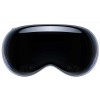Smartwatches are currently very popular among people of all ages. Thinking about the needs of these people, big companies have been making smartwatches for a long time, but this time, small companies have also started making smartwatches in addition to famous expensive brands.
Until now, smartwatches can be used to view jury notifications, watch time, connect with phones via Bluetooth, weather updates, heartbeat monitoring, SPO2 tracking, sleep monitoring, etc. Also, monitoring a person's activities throughout the day can be done through smartwatches. goes For example, how long the user of this smartwatch has walked, how long he has slept, and even where he has moved can be easily known.
However, this time the smartwatch will also play a role in the diagnosis of various diseases of the body. A group of researchers have claimed that the user's brain disorder can also be detected by the smartwatch. Until now smartwatches were limited to only health tracking features. But new research suggests that a smartwatch may also be useful in detecting Parkinson's disease.
After conducting a study on 1 lakh 3 thousand smartwatch users, the smartwatch measured the movement speed of each person among them. The study was conducted by tracking the movement signals of the smartwatch users. The study also used an AI model to compare data from people with Parkinson's disease.
Parkinson's is a brain disease that restricts a person's movement. This happens because of brain cell damage. The disease continues to grow. If this disease is not diagnosed on time, it can cause great damage to people. Symptoms of the disease include tremors, slowness of movement and difficulty walking. If the results of this research can be used in smartwatches, it will help to understand the early signs of Parkinson's disease.
This smartwatch model has proven to be very helpful in providing early warning to those who are likely to develop Parkinson's disease and has also provided accurate estimates of the progression of the disease. Researchers have been able to identify people at risk of developing Parkinson's disease with about 90% accuracy.
Related News
 Global technology brand OnePlus is going to enter the Bangladeshi market shortly, putting an end to the anticipation of tech enthusiasts. OnePlus has been creating quite a stir among the Bangladeshi youth ever since the smartphone company introduced its very first devices globally.
With the brand motto of 'Never Settle', OnePlus has been inspiring millions across the globe. Ahead of beginning itsBangla....English
Global technology brand OnePlus is going to enter the Bangladeshi market shortly, putting an end to the anticipation of tech enthusiasts. OnePlus has been creating quite a stir among the Bangladeshi youth ever since the smartphone company introduced its very first devices globally.
With the brand motto of 'Never Settle', OnePlus has been inspiring millions across the globe. Ahead of beginning itsBangla....English  Youth-favourite smartphone brand realme has introduced realme C65 with No.1 quality, 48-month fluency certification, and segment-first 48-watt charging system. The realme C65 sets a new benchmark in its price segment by becoming the first smartphone to receive the esteemed German 4-year Smooth Certification from TUV-SUD Certification which certifies the performance quality of the device.
The smartphone is also equipped with various technological....English
Youth-favourite smartphone brand realme has introduced realme C65 with No.1 quality, 48-month fluency certification, and segment-first 48-watt charging system. The realme C65 sets a new benchmark in its price segment by becoming the first smartphone to receive the esteemed German 4-year Smooth Certification from TUV-SUD Certification which certifies the performance quality of the device.
The smartphone is also equipped with various technological....English  Apple Vision Pro isn't just a VR headset or AR glasses. It's a bold leap into a new era of computing, a world where the digital seamlessly blends with the physical. Living up to Apple's reputation, the Vision Pro boasts stunning visuals, a revolutionary interface, and tight integration with the Apple ecosystem. However, this futuristic marvel isn't without its flaws. Let's delve....English
Apple Vision Pro isn't just a VR headset or AR glasses. It's a bold leap into a new era of computing, a world where the digital seamlessly blends with the physical. Living up to Apple's reputation, the Vision Pro boasts stunning visuals, a revolutionary interface, and tight integration with the Apple ecosystem. However, this futuristic marvel isn't without its flaws. Let's delve....English  Realme is the popular mobile brand in Bangladesh. Recently launched c series new smartphone Realme C67. Display: This phone has a 6.72 inch full HD+ display with 1080 x 2400 pixels resolution supported. This screen supports 90 Hz refresh rate, 180 Hz touch sampling rate and 950 nits brightness. Processor: This phone comes with Android 14 and Realme UI. For processing, itBangla....English
Realme is the popular mobile brand in Bangladesh. Recently launched c series new smartphone Realme C67. Display: This phone has a 6.72 inch full HD+ display with 1080 x 2400 pixels resolution supported. This screen supports 90 Hz refresh rate, 180 Hz touch sampling rate and 950 nits brightness. Processor: This phone comes with Android 14 and Realme UI. For processing, itBangla....English  Samsung Electronics Co. unveiled the Galaxy S24 Ultra, Galaxy S24+ and Galaxy S24, unleashing new mobile experiences with Galaxy AI. Galaxy S series leads the way into a new era that will forever change how mobile devices empower users. AI amplifies nearly every experience on Galaxy S24 series, from enabling barrier-free communication with intelligent text and call translations, to maximizing creative freedom....English
Samsung Electronics Co. unveiled the Galaxy S24 Ultra, Galaxy S24+ and Galaxy S24, unleashing new mobile experiences with Galaxy AI. Galaxy S series leads the way into a new era that will forever change how mobile devices empower users. AI amplifies nearly every experience on Galaxy S24 series, from enabling barrier-free communication with intelligent text and call translations, to maximizing creative freedom....English 
